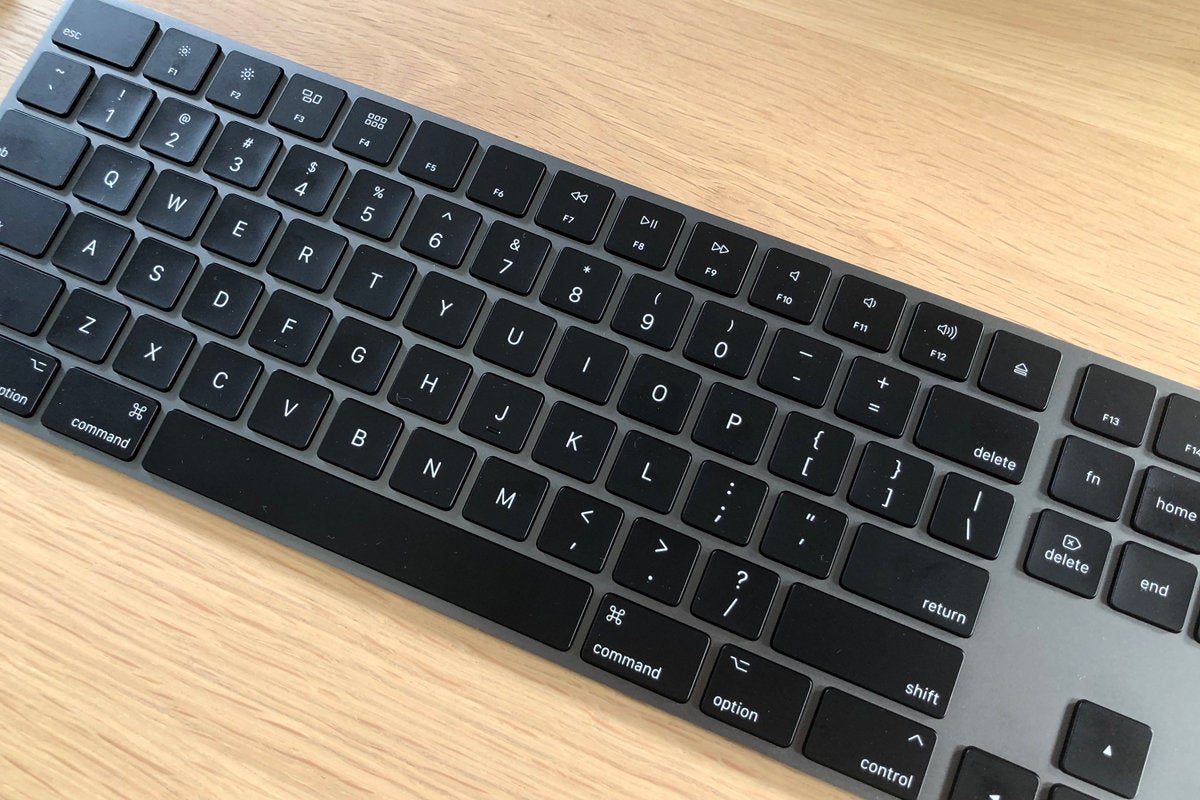
The key remapping available in system preferences allows swapping just the 4 keys: Caps Lock, Control, Option and Command. Home/End mapping via Jon Evans, Start/End mapping via who have lots of other remapping suggestions.
Mac keykey mac#
This remapping works in most Mac apps (but some like BBEdit, XCode and Firefox do their own key handling) for the terminal app see below.Īfter editing the DefaultKeyBinding.dict file, you will need to restart the relevant application. * Remap keys for switching the case of the current word */ "^$\UF72B" = moveToEndOfDocumentAndModifySelection: // Ctrl + Shift + End "^$\UF729" = moveToBeginningOfDocumentAndModifySelection: // Ctrl + Shift + Home "^\UF72B" = moveToEndOfDocument: // Ctrl + End "^," = moveToBeginningOfDocument: // Ctrl +, "^\UF729" = moveToBeginningOfDocument: // Ctrl + Home * Remap keys for Start/End of document */ * or "$\UF72B" = "moveToEndOfLineAndModifySelection:" */ "$\UF72B" = moveToEndOfParagraphAndModifySelection: // Shift + End * or "$\UF729" = "moveToBeginningOfLineAndModifySelection:" */ "$\UF729" = moveToBeginningOfParagraphAndModifySelection: // Shift + Home * or "\UF729" = "moveToBeginningOfLine:" */ "\UF729" = moveToBeginningOfParagraph: // Home * Remap Home / End keys to the start/end of paragraph (or line) */ The sample file below includes some help text and the codes to set Home and End to Start/End of line: /* The personalized bindings will take precedence so that is the only file you need to edit. Touch ~/Library/KeyBindings/DefaultKeyBinding.dictĭo not edit the built-in /System/Library/KeyBindings/DefaultKeyBinding.dict file, as that will affect all user accounts on the machine. If they are not already in place - just create the file & directory: ~/Library/KeyBindings/DefaultKeyBinding.dict To remaps the key bindings of the current user, edit the default keybinding file:


The default key bindings for the Home and End keys in macOS are different to most other operating systems. Additional resourcesĪpple provides VoiceOver user information at binding allow you to swap around the action of keys (or key combinations) on the Mac keyboard. Typing "nav" will filter to the headings that contain those characters. For example, with the Headers rotor open, pressing "2" will filter to second level headings. Within the rotor, you can begin typing to filter the available elements. Once a page element type is selected, use the Up Arrow and Down Arrow to select a particular element and Enter to activate it. Open the rotor by pressing VO + U, then use the Left Arrow and Right Arrow keys to choose between element types (availability varies depending on the content of the web page, and whether the element type is enabled for viewing in the rotor), such as Links, Headings, Tables, Frames, Images, Auto Web Spots (automatically generated list of structural and significant items on the page), Web Spots (user-identified page areas), Form Controls, Landmarks, Visited Links, and Non-Visited Links. You can choose which element types are viewable in the rotor by opening the VoiceOver Utility with VO + F8, then going to Web > Web Rotor. The VoiceOver "rotor" feature helps users to do some frequently performed navigation actions quickly and easily. Read column from VO cursor location to bottom of column Read row from VO cursor location to end of row You can navigate tables in text areas by row and column, and sort by column. Interact with (go into/out of) objects (like iframes, menus, application regions, etc.) Go to next/previous focusable item (link, button, input, etc.) You can press the Shift key with these commands to move to the previous occurrence. The following shortcuts will help you navigate common page elements. Select speech setting option (speaking rate, voice, pitch, etc.) Jump to bottom of page (using laptop keyboards) Jump to bottom of page (using desktop keyboards) Jump to top of page (using laptop keyboards) Jump to top of page (using desktop keyboards) Read word (press W multiple times to spell words alphabetically and phonetically) The VO keys can be locked so that they do not need to be pressed to perform VoiceOver commands by pressing VO +.

The combination is referred to as VO in the tables. VoiceOver uses the Control and Option keys before each command. If you try to use it with any other browser, it may work for some things, but not as consistently as with Safari.Ĭommand + F5 starts the VoiceOver program.


 0 kommentar(er)
0 kommentar(er)
